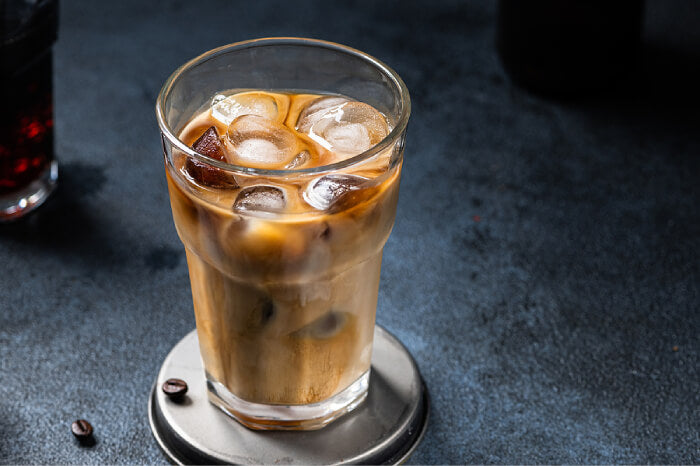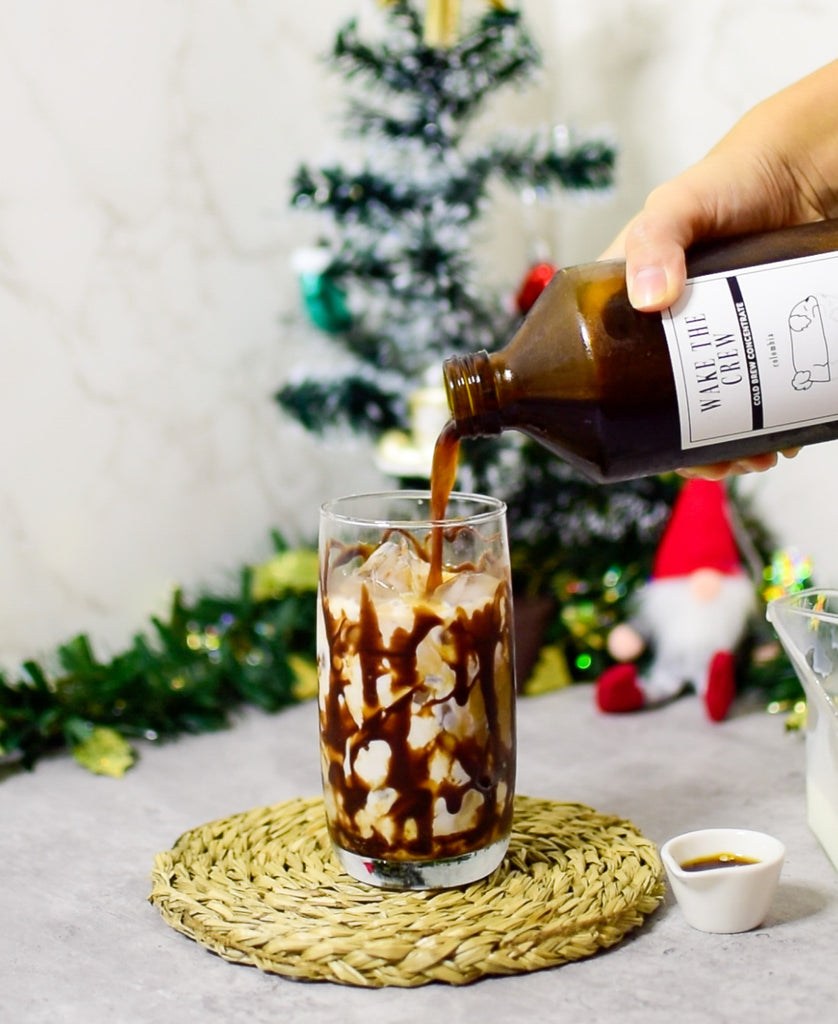Cold brew coffee is not a new creation, and has been around for some time. However, despite being a popular product since 2015, many people still seem to be confused about what makes cold brew coffee distinct from the regular hot brewed one.
Compared to the usual hot brewing, cold brewing uses a different extraction method which produces a smoother, sweeter, and more versatile finish, playing by the rules of coffee-making differently.
Read on to find out more about what makes hot brew coffee and cold brew coffee different, and which one is better for you.
What is the difference between hot brew and cold brew?
Cold brew coffee is a brewed coffee produced by steeping ground coffee beans in cold or room-temperature water for 12 to 24 hours. Compared to the other brewing methods, cold brewing requires the coffee beans’ grind size to be coarser to create more flavour. Generally, the taste of a cold brew coffee that has been made right is light, smooth, and sweet.
On the other hand, hot brew coffee is produced by applying hot water to ground coffee beans. There are various methods for brewing hot coffee, such as using a drip machine, a French press, or a pour-over coffee maker. The grind size required for a hot brew differs from method to method, but most people opt for a medium grind. Because it’s brewed at a higher temperature, hot brew coffee tastes more bitter than a cold brew.
Why choose cold brew coffee?
Both hot brew coffee and cold brew coffee have their respective strengths and weaknesses. However, if you’re looking for a coffee that will provide you with much more flavour without worrying about the acids, cold brew is your best choice.
Here are some of the primary reasons you should choose a cold brew coffee over a hot brew.
1. There is far more versatility in cold brew
Hot coffee is only hot coffee. Although it’s cosy, rich, and satisfying on rainy afternoons, there’s nothing much you can do with a hot coffee. While there are a few mixed drinks you can create with it, they’re not something you’d consider versatile.
In contrast, you can make various drinks with cold brew coffee. This is because cold brewing produces a concentration that you can easily pair with many other ingredients, such as milk, sugar, soda, and more. Hence, if you like exploring flavours and ingredients, cold brewing will give you an avenue for creative beverage-making.
2. Cold brew has lower acidity and bitterness
You can notice a significant difference between hot brew coffee and cold brew coffee from the first sip. Compared to a hot brew, a cold brew coffee tends to be less acidic and taste less bitter. Contrary to popular belief, bitter coffee is not strong coffee. The difference in acidity and taste is simply due to the nature of their brewing process.
As you probably already know, extraction occurs when water dissolves and extricates compounds out of coffee grounds, such as sugars and acids. Different temperatures extricate different compounds at varying speeds. Hence, if you use boiling water when brewing your coffee, you’ll likely get a strong bitter taste because boiling water causes acids to break down into extra-bitter compounds.
On the other hand, cold brewing doesn’t create that much bitterness because it plays by different rules. Rather than just slowing down the extraction of tasty compounds in coffee beans, cold water changes what is being extracted and what stays behind in the grounds. In other words, cold brewing doesn’t extract the acids that typically become bitter in hot brew coffee. These acids don’t also oxidise, so the cold brew doesn’t get extra acidic.
3. Cold brew lets you taste coffee aroma better
There are some apparent differences between a hot brew and a cold brew when it comes to flavour. A hot brew coffee usually has a rounded taste, a savoury aroma, a light sweetness, and a crisp acidity. On the other hand, cold brew coffee often boasts a smooth flavour, an abundance of sweetness, a moderate hint of acidity, and essentially no bitterness.
Cold brew coffee doesn’t deliver rich aromas right off the bat compared to hot brew – and there’s a good reason. Unlike in hot coffee, where the aromatic coffee oils quickly become volatile due to the high temperature, the oils remain cool in the cold brewing and thus don’t become volatile.
This means that the coffee oils stay in the cold brew coffee so that when you swallow your drink, the savoury and aromatic oils reach your retro-nasal passages and make your brain interpret them as a bundle of vibrant flavours.
Conclusion
The difference between hot brewing and cold brewing mainly lies in how they extract and produce coffee and the quality of coffee they make. If you want a fuller coffee in terms of flavour, lower levels of acidity, and versatility, cold brew coffee is the perfect choice for you! A bottle of ready-to-drink cold brew coffee will surely give you everything you’re looking for in a drink!
For the best and most convenient ready-to-drink coffee anytime, try out our bottled cold brew coffee that comes in various flavours, such as mocha, oat latte, and more. Our savoury and energy-boosting cold brew coffee is the perfect grab-and-go drink for your hectic schedules.




